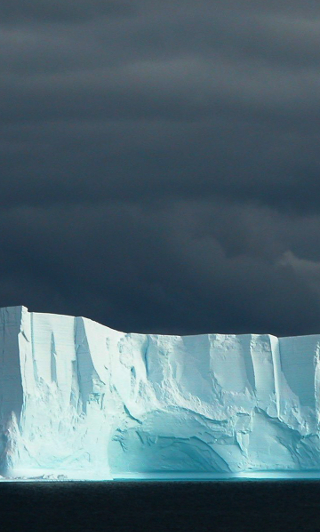Giant iceberg breaks free
 The world’s largest iceberg has broken free from the Antarctic seafloor.
The world’s largest iceberg has broken free from the Antarctic seafloor.
The colossal iceberg, A23a, the world's largest at nearly a trillion metric tonnes, has broken free from its entrapment off Antarctica's coastline after almost four decades.
Initially calved in 1986 from the Filchner Ice Shelf, this behemoth, measuring around 4,000 square kilometres, spent years stuck in the Weddell Sea due to its massive size.
Iceberg A23a had held the title of the world's largest iceberg multiple times, with its recent resurgence in June after its predecessor, A76a, disintegrated.
A23a's long-awaited movement began in 2020 as it gradually loosened from its seafloor mooring.
Satellite imagery shared by the British Antarctic Survey has revealed A23a's journey along Antarctica's coastline, propelled by melting ice beneath, reducing its weight and lifting it off the seafloor.
Such immobility for decades is common for icebergs of this magnitude, referred to as "ice islands" by early Antarctic explorers.
A23a's trajectory may lead it to the Drake Passage, also known as the iceberg graveyard, potentially colliding with South Georgia Island, home to significant penguin colonies.
Concerns have been raised about disrupting wildlife and feeding capabilities, echoing the situation in 2020 with A68a. However, experts say that the collision with South Georgia is not certain.
Should A23a evade South Georgia, its size could carry it as far north as South Africa, impacting shipping routes. Yet, concerns about fracture lines increasing susceptibility to breaking apart persist.
Scientists say they will closely monitor its movements, capturing new footage as it drifts beyond Antarctic waters.
The iceberg's recent release from its seafloor tether has led to speculation about its impact on marine life and ecosystems.
Researchers aboard the RRS Sir David Attenborough have documented their encounter with the giant, collecting seawater samples to assess potential ecological effects.
A23a, also one of the world's oldest icebergs, could pose a threat if it again becomes grounded, obstructing access for millions of seals, penguins, and seabirds breeding and foraging around South Georgia Island.








 Print
Print